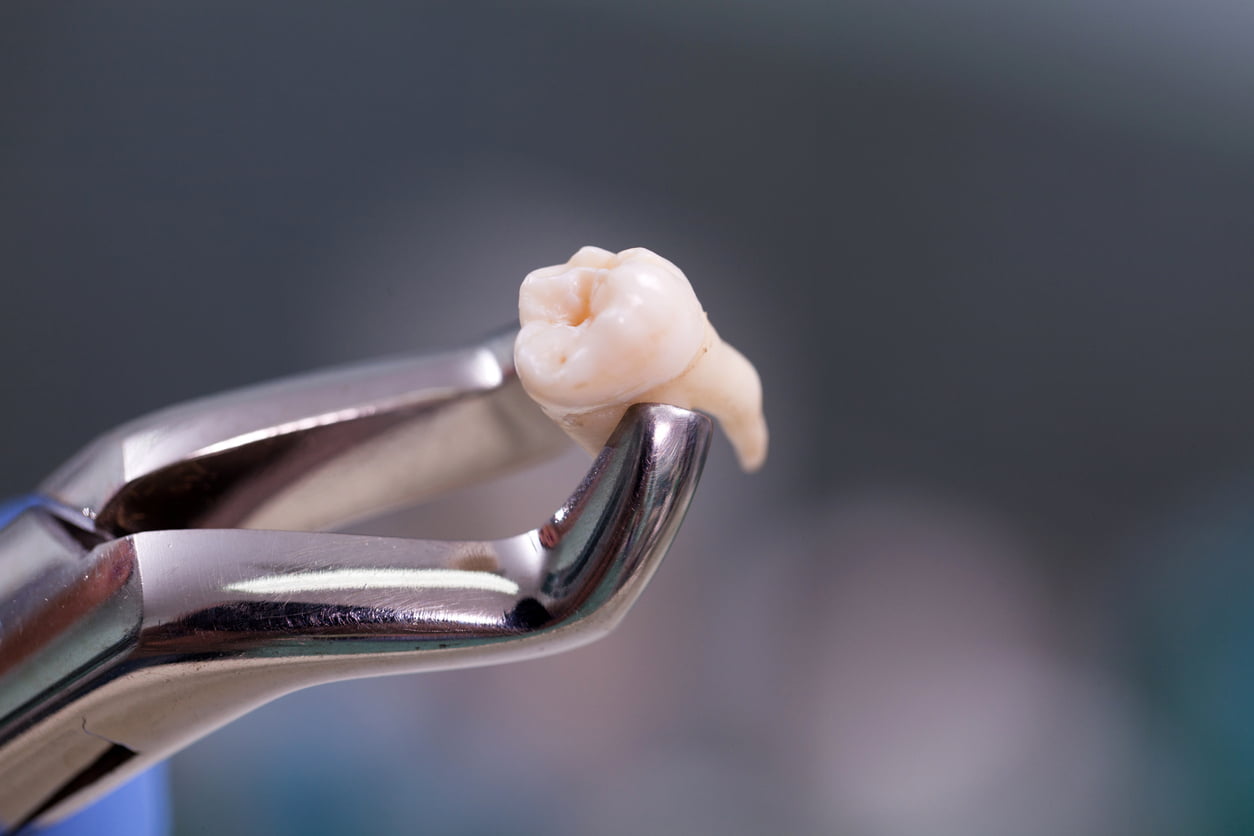We hope that your recovery will be as smooth and pleasant as possible. Following these instructions will assist you, but if you have questions about your progress, please call our practice on 0131 557 0202.
Book appointment

Pain management: Following the extraction you are likely to need some form of pain control. Take your usual painkillers (whatever you would normally take for a headache for example) on a regular basis over the next few days. Do not exceed the recommended doses. You should avoid using aspirin.
Keeping the area clean: Use warm salt-water mouth baths beginning about eight hours after the extraction (or the following day). Use a cupful of warm water (the temperature of a hot drink that you would normally comfortably drink without scalding yourself). Dissolve a half-teaspoon of salt in the water. Take a mouthful of the water and hold the liquid over the extraction site until it begins to cool. Spit this out and repeat the process until all the water is used up. It should take a few minutes to do this. It is not a quick rinse and spit, but a mouth bath, at the end of which your mouth should feel warm and glowing. Repeat this process every few hours for 5 to 7 days after the extraction. The salt mouth baths will help to keep the area clean, will make it less likely for the tooth socket to become infected, and will give you some comfort.
Brushing: Begin your normal oral hygiene routine as soon as possible after surgery. Avoid brushing near the surgical site(s). Soreness and swelling may not permit vigorous brushing, but it is extremely important to clean your teeth within the bounds of comfort. Maintaining a clean environment adjacent to the healing surgical wounds is required for optimum and speedy healing.
Eating: You should be able to eat as normal, taking care to avoid the extraction site. If possible, chew on the opposite side of your extraction site. If you do not feel like eating, make sure that you at least drink plenty of non-alcoholic fluids. Avoid extremely hot foods. Do not use a straw for the first few days after surgery. It is sometimes advisable, but not absolutely required, to confine the first day’s intake to liquids or pureed foods (soups, puddings, yogurt, milk shakes, pancakes, mashed potatoes, scrambled eggs, pasta, jam, ice cream, etc.) Avoid chewing food until tongue sensation has returned. It is best to avoid foods like rice, nuts, sunflower seeds, popcorn, etc., which may get lodged in the socket areas. Over the next several days you may gradually progress to solid foods. It is important not to skip meals! If you take nourishment regularly you will feel better, gain strength, have less discomfort and heal faster.
Contact us
Normal healing after tooth extraction should be as follows:
Sutures/‘Stitches’: Your dentist may find it necessary to place sutures (stitches) after your tooth has been removed. For example, if a gum tissue flap was raised during your procedure, stitches will be needed to tack it back into place. You may notice that they are loose after the swelling of your gum tissue decreases. This is completely normal. Nonresorbable stitches must be removed. This appointment is usually scheduled somewhere between 7 to 10 days after they were originally placed. Having your sutures taken out is usually an easy, quick and pain free process.
Oozing: Bleeding will occur after surgery, and it is not uncommon to ooze blood for 24-48 hours after surgery. Keep in mind that oral bleeding represents a little blood and a lot of saliva. Placing a gauze pack over the area and biting firmly will control bleeding. If oozing is still active, replace gauze as needed every 30-45 minutes.
Persistent bleeding: Bleeding should never be severe. If so, it usually means that the packs are being clenched between teeth only and are not exerting pressure on the surgical areas. Try repositioning the packs. If bleeding persists or begins again sit upright or in a recliner, avoid physical activity, use ice packs and bite on gauze for 1 hour or on a moistened tea bag for 30 minutes. The tannic acid in the tea leaves helps to promote blood clotting. If bleeding remains uncontrolled, please call us.
Excessive bleeding is defined as pooling or dripping blood out of the extraction sites within 15-20 seconds of removing the gauze. Don’t use the amount of blood on the gauze as a guide, because minimal bleeding may persist for up to 24 hours. It is not unusual for saliva to be slightly blood-tinged for several days following surgery.
Swelling: Swelling is a normal occurrence after surgery and will not reach its maximum until 2-3 days after surgery. It can be minimised by using a cold pack, ice bag. This should be applied twenty minutes on and twenty minutes off during the first 24 hours after surgery.
Discoloration or Bruising: The development of black, blue, green or yellow discoloration is due to bruising beneath the tissues. This is a normal post-operative occurrence that might appear 2-3 days after surgery.
Sharp Edges: If you feel something hard or sharp edges in the surgical areas, it is likely you are feeling the bony walls which once supported the extracted teeth. Occasionally small slivers of bone may work themselves out during the following week or so. If they cause concern or discomfort, please call our practice.
Dry Lips: If the corners of your mouth are stretched they may dry out and crack. Keep your lips moist with an ointment such as Vaseline.
Dry Socket: After tooth extraction, it’s important for a blood clot to form to stop the bleeding and begin the healing process. A dry socket can occur when the blood clot is dislodged from the surgery site exposing the bone and fine nerve endings. This condition is more common in back teeth, although it can occur in any extraction site. Dry socket occurs one or more days after an extraction and can last 5-6 days. It is painful and you will need treatment.
Contact us